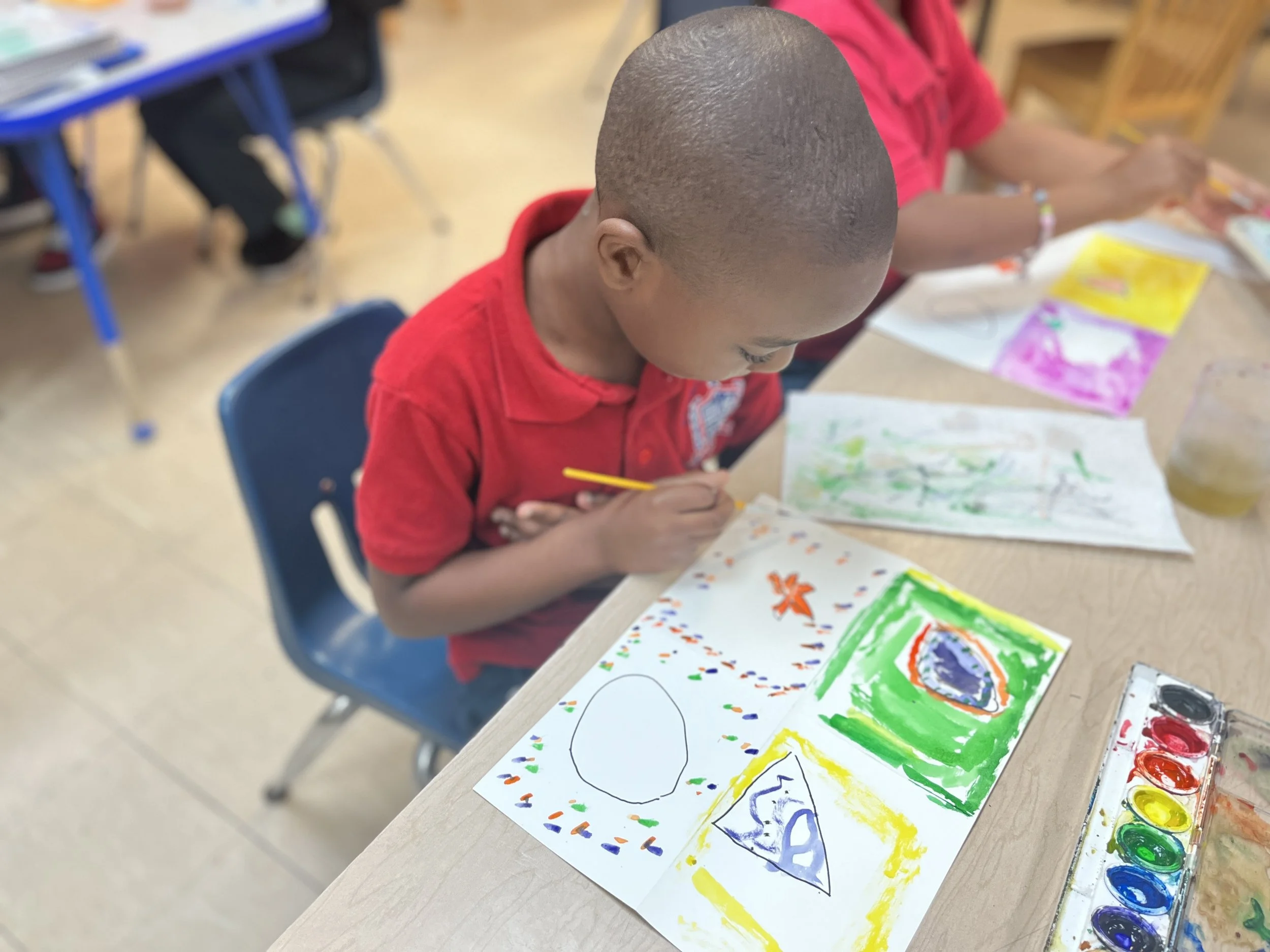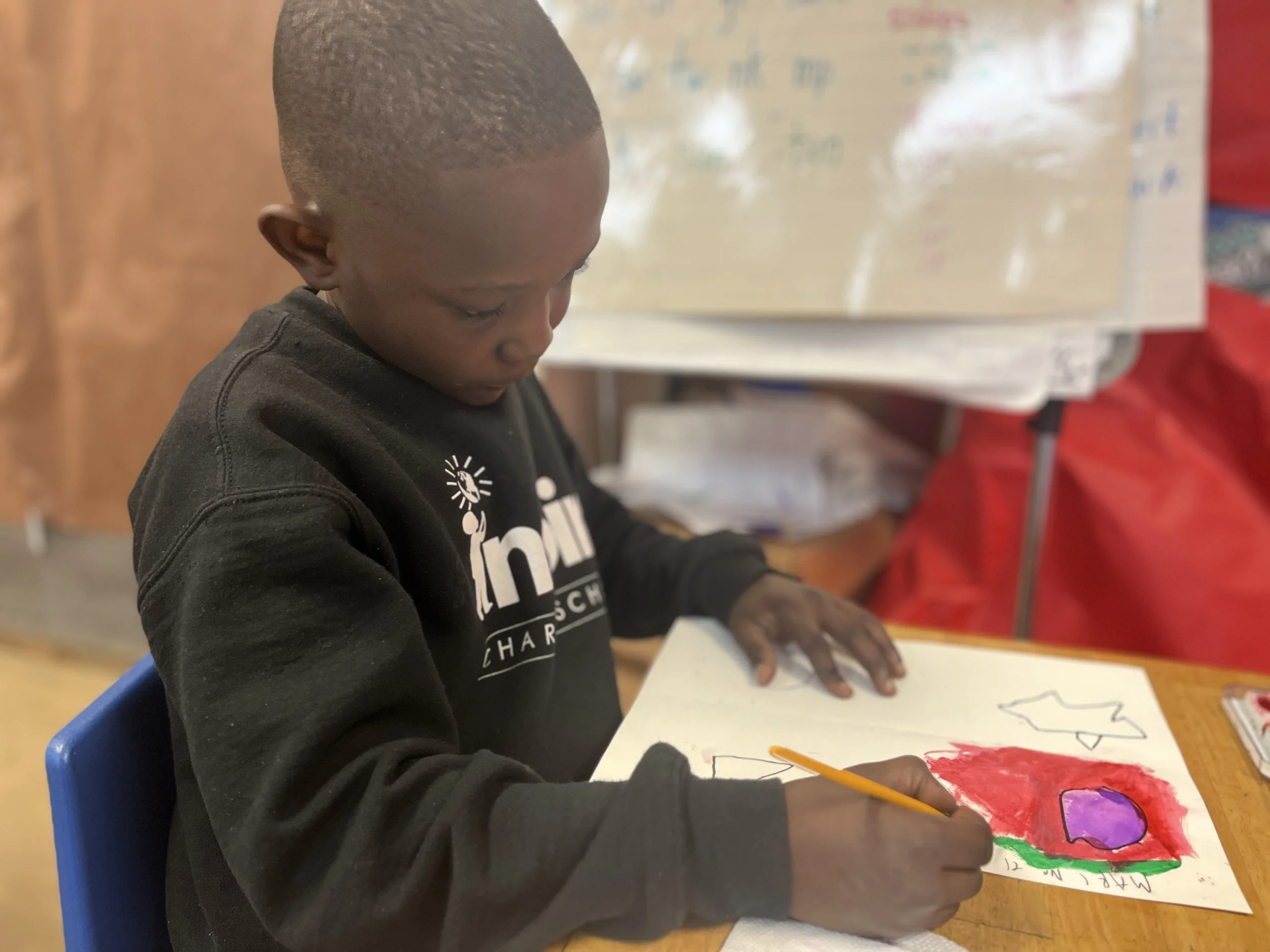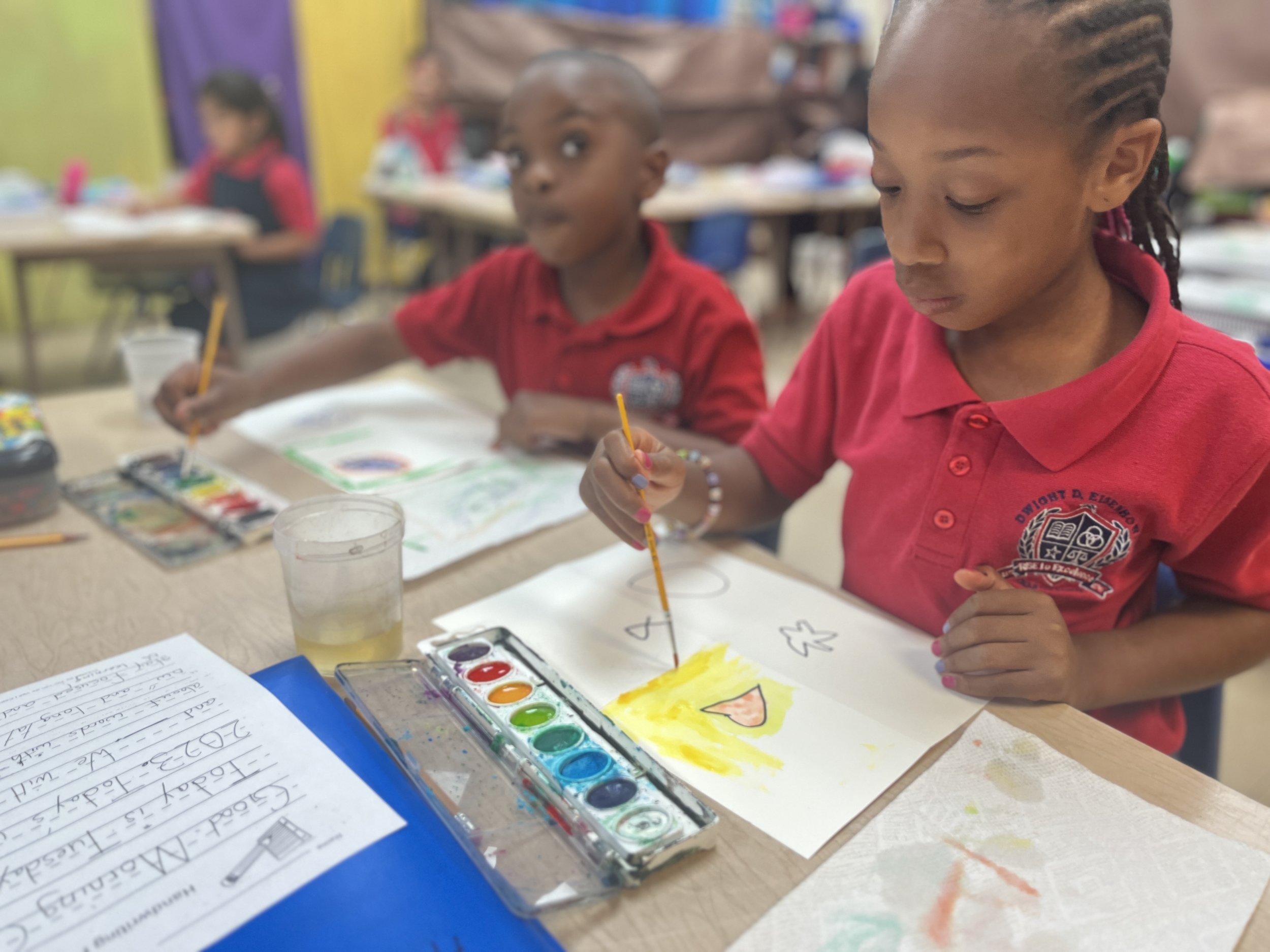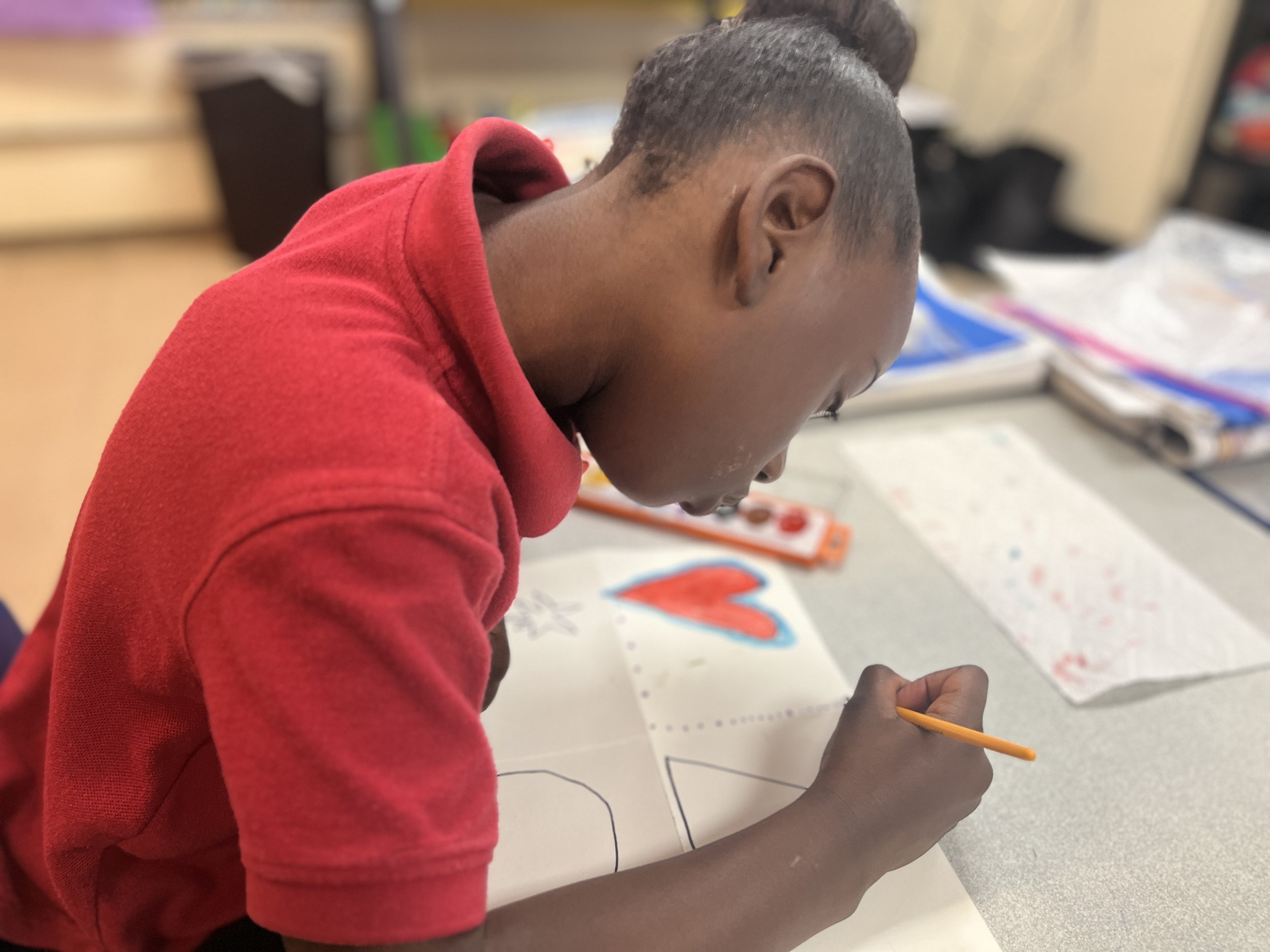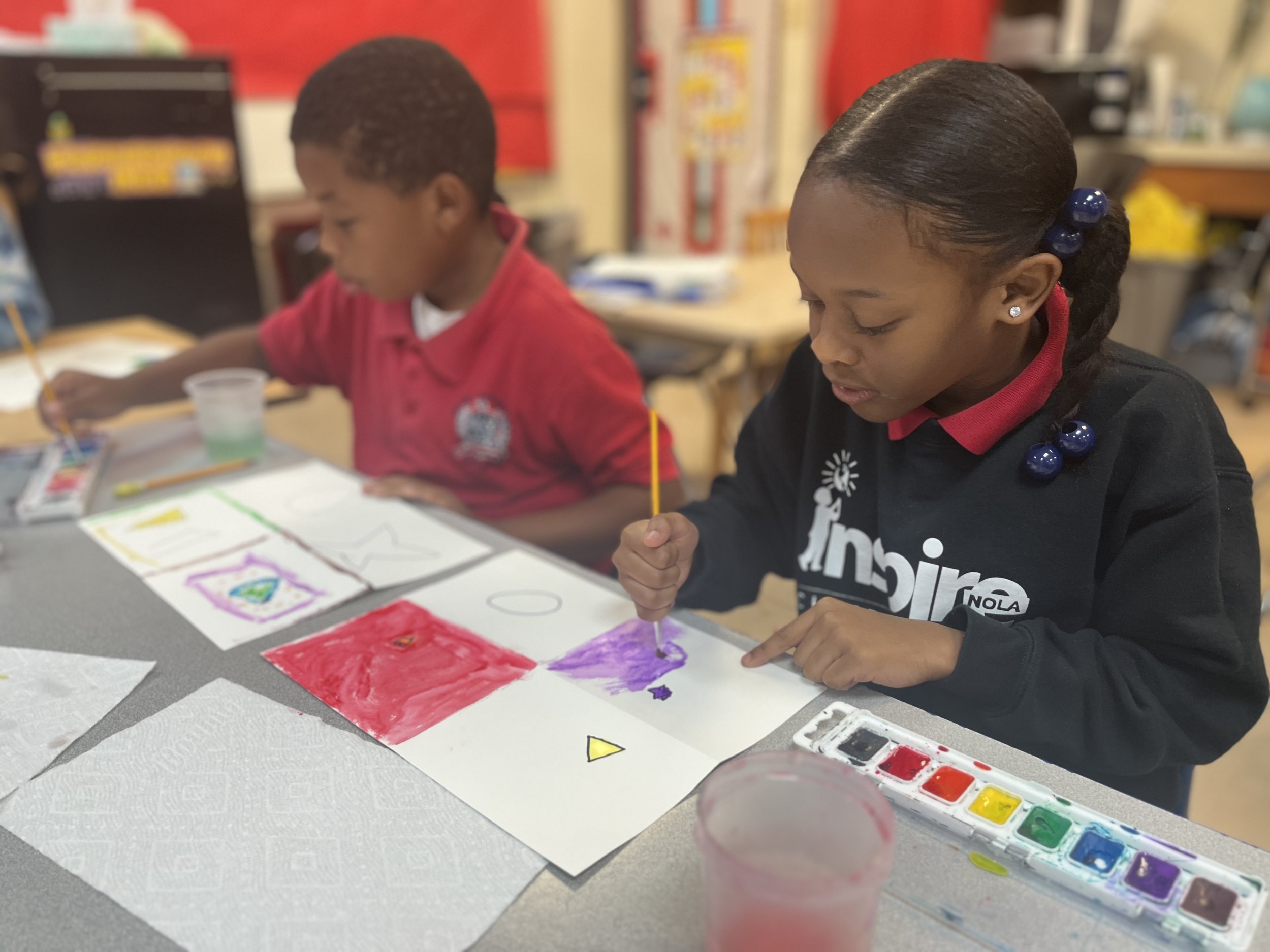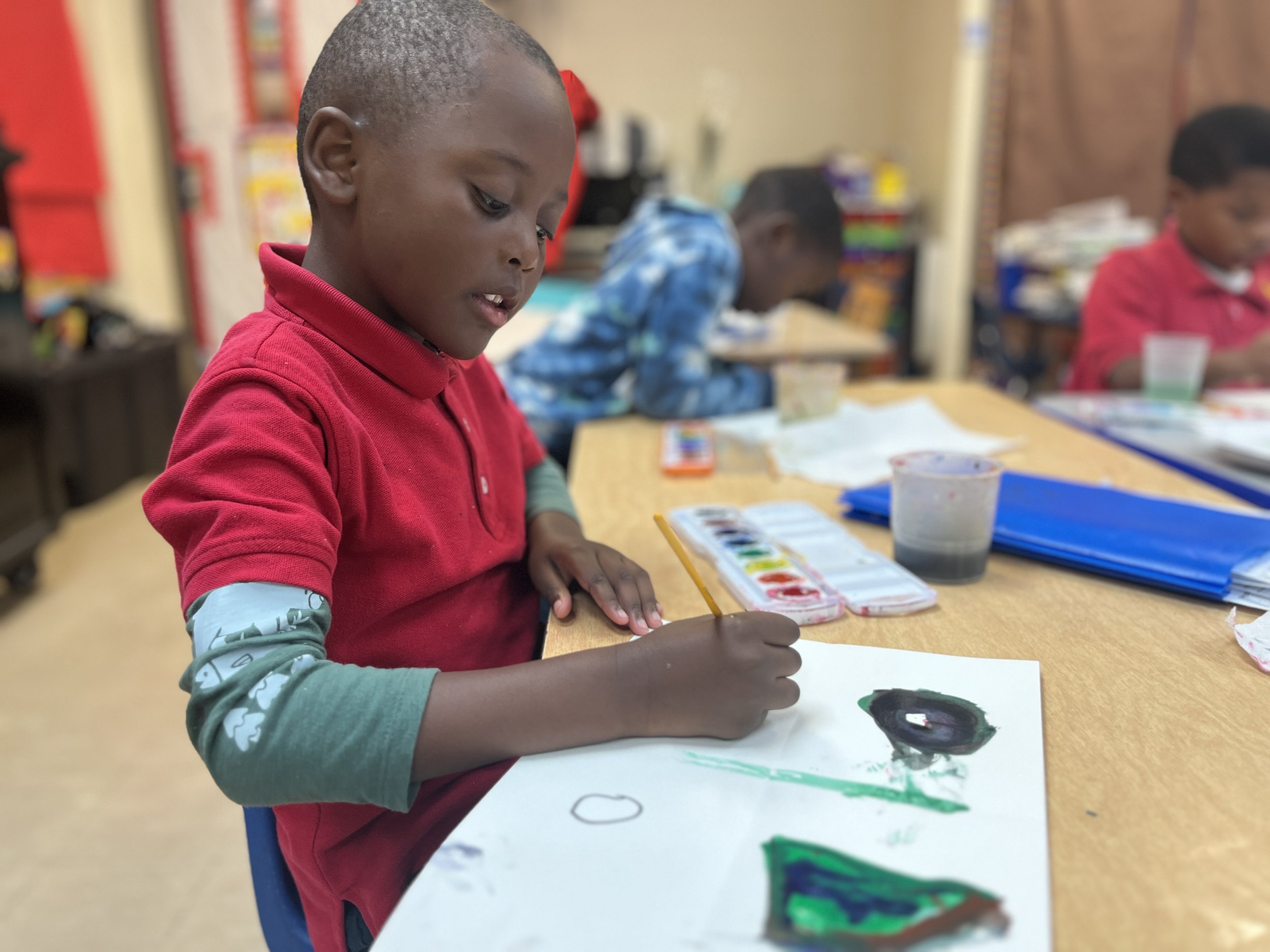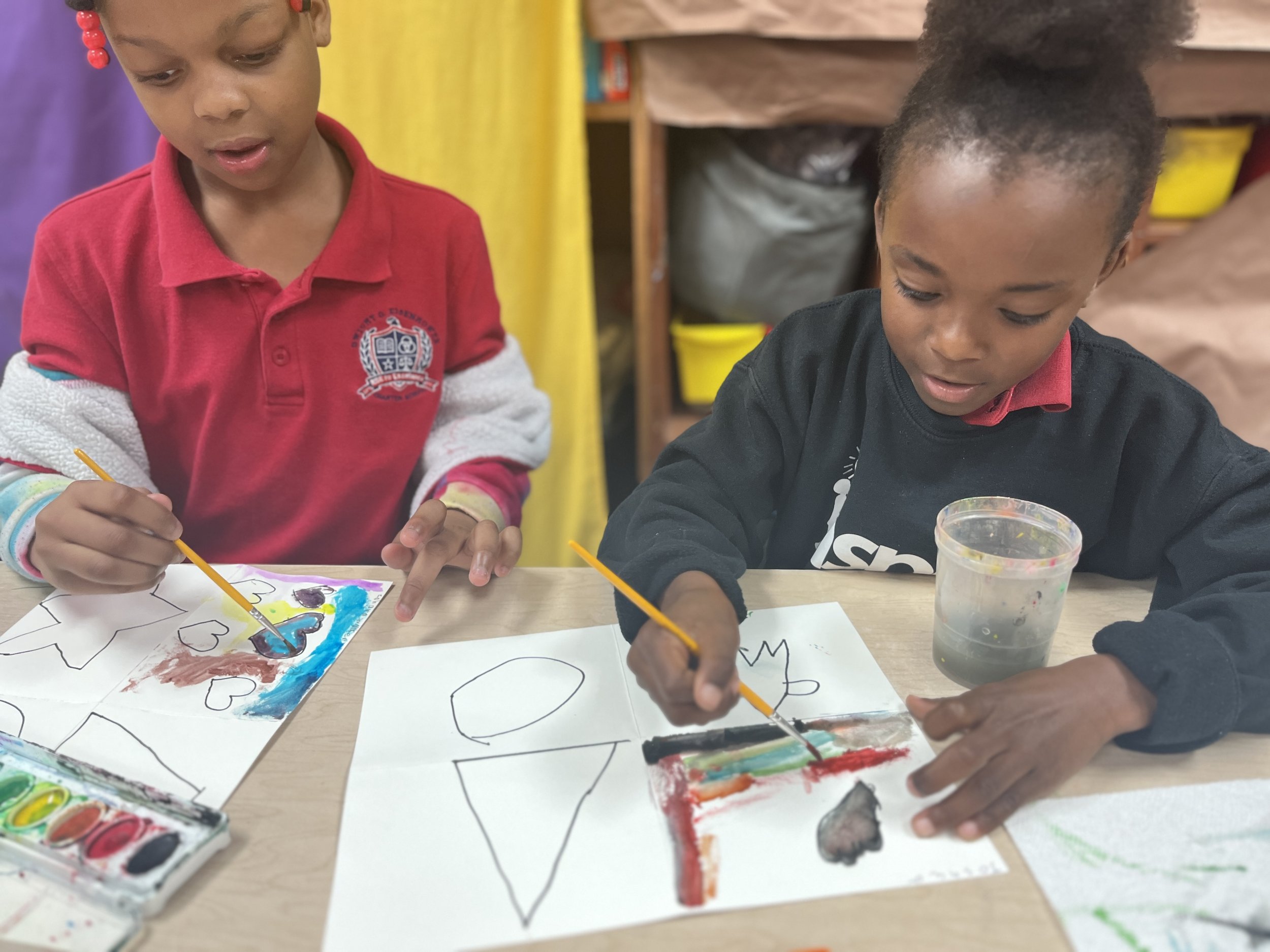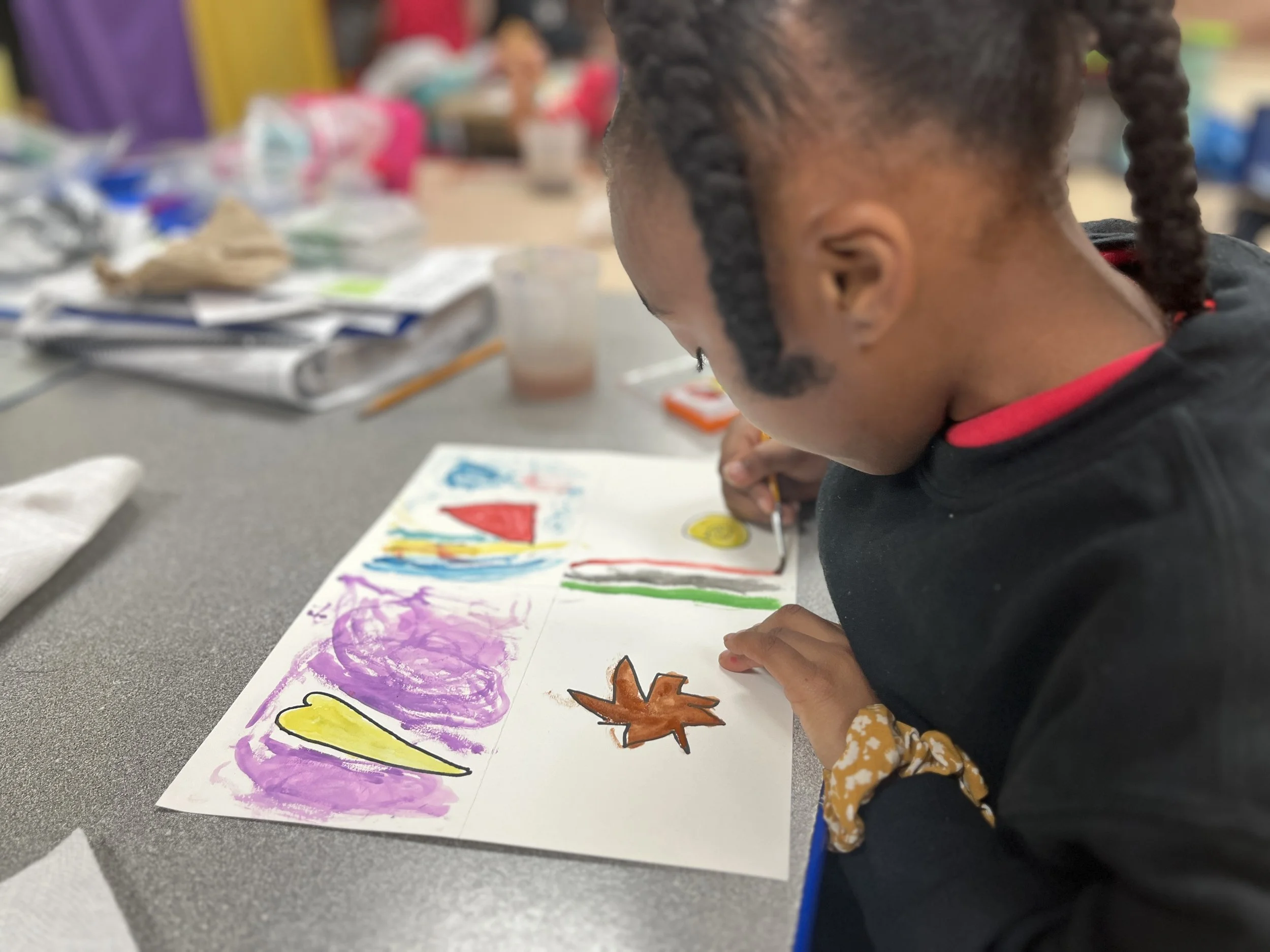Prioritizing the Purpose: Creating Engaging and Enriching Arts-Integration Lessons
As educators, it is so important to be intentional about shaping a space for students that encourages them to fully engage in the process of creating. For me, a crucial part of curating a creative space is building an environment where students trust that directions serve a purpose and know that they will be trusted to engage with an activity in their own unique way.
Here are three things I like to keep in mind when designing a focused & engaging arts integrated activity:
Identify the Art Strategy: Name and know exactly what you are developing in the activity. Being specific in your arts objective can help eliminate distracting choices and tasks (e.g. exploring watercolor, facial expressions in pantomime, using contrast to build tension in collage, etc.). Just like any lesson plan, naming your objective promotes a focused activity. There is a beautiful chaos that is a part of creating, but the organization of the activity itself shouldn’t feel chaotic.
What skills & art vocabulary need to be taught?: This is where the meaningful directions come into play! What do you need to teach students in order for them to successfully develop and master the art strategy you identified? (e.g. if introducing using watercolors as an arts strategy, students need to know how to use a paintbrush: the technique of “whisper touch”, not pushing hard; how to get a drop of water on their paint brush and mix the water in the color they want to use; washing brush between colors; etc.) This reflection is not about what the final product should look like, but a focus on what will equip students with the necessary tools to develop this art form.
What artistic freedoms are available to students? Now that we have a focus, we have limited distraction and can expand engagement and accessibility! Rather than approaching an activity with, “What is the final product?”, I like to ask myself, “What choices am I creating space for?” and, “How am I celebrating expression?” (e.g. if students are exploring watercolor they have the freedom of color choice, amount of water being used, dots, strokes, layers, blotting, bleeding, etc.). Releasing the focus on a specific final product promotes creating as a form of expression and exploration.
These design elements keep me focused on the student experience. I have found that when there is intention embedded in the way I design my activities, and I am open to accepting that intention does not equal impact, it opens the door for authentic, powerful and completely unpredictable student expression. When I perceive that an activity isn’t working for a student the way I expected, I have found that asking myself, “what is the purpose of this activity?” is a great way to re-calibrate and determine what behaviors need to be addressed, and what behaviors actually need to be celebrated!

